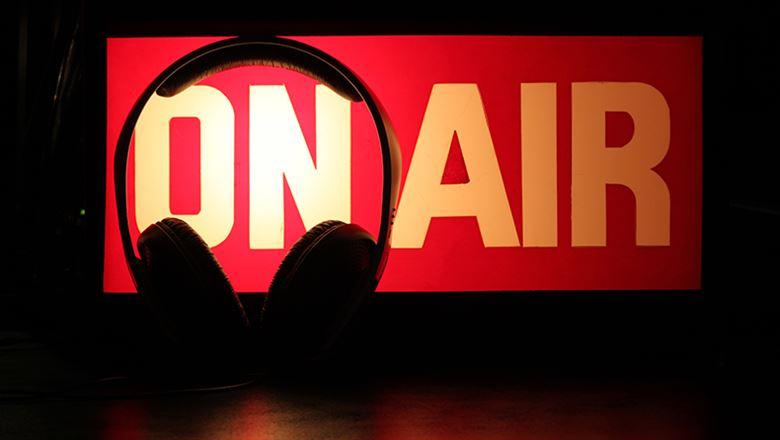Be Heard: A Podcasting Primer

Podcasting allows you to connect with your members anytime and anywhere. Because they're portable, podcasts are easy for your members to consume; they're also a great way for you to create a more personal connection with your members. If you're a podcasting newbie, never fear: Here's how to get started.
Wouldn't you like to connect with your members at anytime and anywhere? One solution is to start a podcast. Podcasts are easy to consume because they are portable, and they allow you to create a more personal connection with your audience—a human relationship that a blog post cannot.
I have been a podcaster for more than 10 years. I was podcasting when it was cool and stuck with it when it became uncool and then circled back around to being cool again. I currently cohost a podcast with thousands of weekly listeners. How do you get started with your own podcast and avoid the mistakes I made along the way? Read on.
Choose a distinct theme. It's best to go with something that has lasting power and numerous content options. Find a theme that is compelling but that is neither too broad nor too narrow in focus. For example, a podcast theme of "Talk in the Medical Field," might be too broad to attract listeners. But a theme of "Hand Surgery Developments at West Coast Hospitals," is way too narrow. Finding the right balance is critical to having a successful podcast.
Choose a format. I have used structures from 100 percent interviews to roundtables and everything in between. You may need to experiment with the format to find the one that best suits your hosting skills.
Determine the podcast length. Typically, podcasts aren't longer than 60 minutes because listeners lose attention and focus after this threshold. The length of your show also depends on your comfort level at the mic and the amount of information you want to convey in one episode. Podcast episodes can have different lengths, but listeners expect a consistent range.
Consider frequency. Podcasting on a weekly or biweekly basis is pretty standard. I'm a fan of a weekly schedule. A weekly schedule will keep your show at top of mind, and be something your audience will look forward to. This not only creates an "appointment listening audience" but also gives your show more opportunities to be talked about and promoted by your listeners. Weekly episodes, in my experience, seem to be the perfect balance of giving the audience the right amount of content and allowing proper time for you, as well as listeners, to talk about and promote your show.
I have been a podcaster for more than 10 years. I was podcasting when it was cool and stuck with it when it became uncool and then circled back around to being cool again.
Buy a good microphone. This makes a big difference. I still regret buying an inexpensive microphone for my first podcast. The audio quality wasn't nearly good enough, and I had to upgrade immediately. Your microphone really determines the sound quality—and if a podcast doesn't sound good, you won't attract or retain an audience. Whatever you do, avoid using your computer's built-in microphone. The results are inferior.
An extra tip on microphones: Podcasters tend to use either a USB or an XLR microphone. A USB microphone is great for a single host as it plugs directly into a computer and allows you to start recording immediately. But I highly recommend an XLR-connected microphone, where a mixer is also needed. Do some research and find microphones in your price range. Then search for audio samples from those mics to determine an acceptable sound quality.
Select a mixer. A mixer allows you to connect with almost any other audio device, and it gives you fantastic versatility and options for expansion. It also enables you to add more in-studio microphones for multiple hosts, as well as any in-studio guests. When you select a mixer, make sure that it has a USB connection to use for recording with the computer. Purchasing a mixer costs more upfront, but using a mixer creates a better product and your listeners will enjoy the podcast more.
Pick your recording software. If you're a Mac user, Garageband, a free software, works well and has some great built-in editing tools. Audacity is another free option, and it's available on Windows or Mac operating systems. Adobe Audition is a little pricey, though it's my personal favorite. Take advantage of free trials to find the recording software that you most enjoy using. You'll spend a lot of time in post-production doing digital editing, so the software you choose becomes your best friend.
Get your show online. After you've recorded and edited your first file, get your show online. You might be able to host the file and RSS feed on your own server, but this is not always the case. Free options like Wordpress and Blogger are great, but they're limited in their flexibility. Hosting sites like Podbean, Libsyn, and Podomatic enable your feed to get on popular podcast apps like iTunes and Sticher—and they also offer great analytics. You don't have to go to those podcast app sites to register your feed, but registering is the best way to make sure your podcast is heard far and wide.
Now go out there and be heard!

